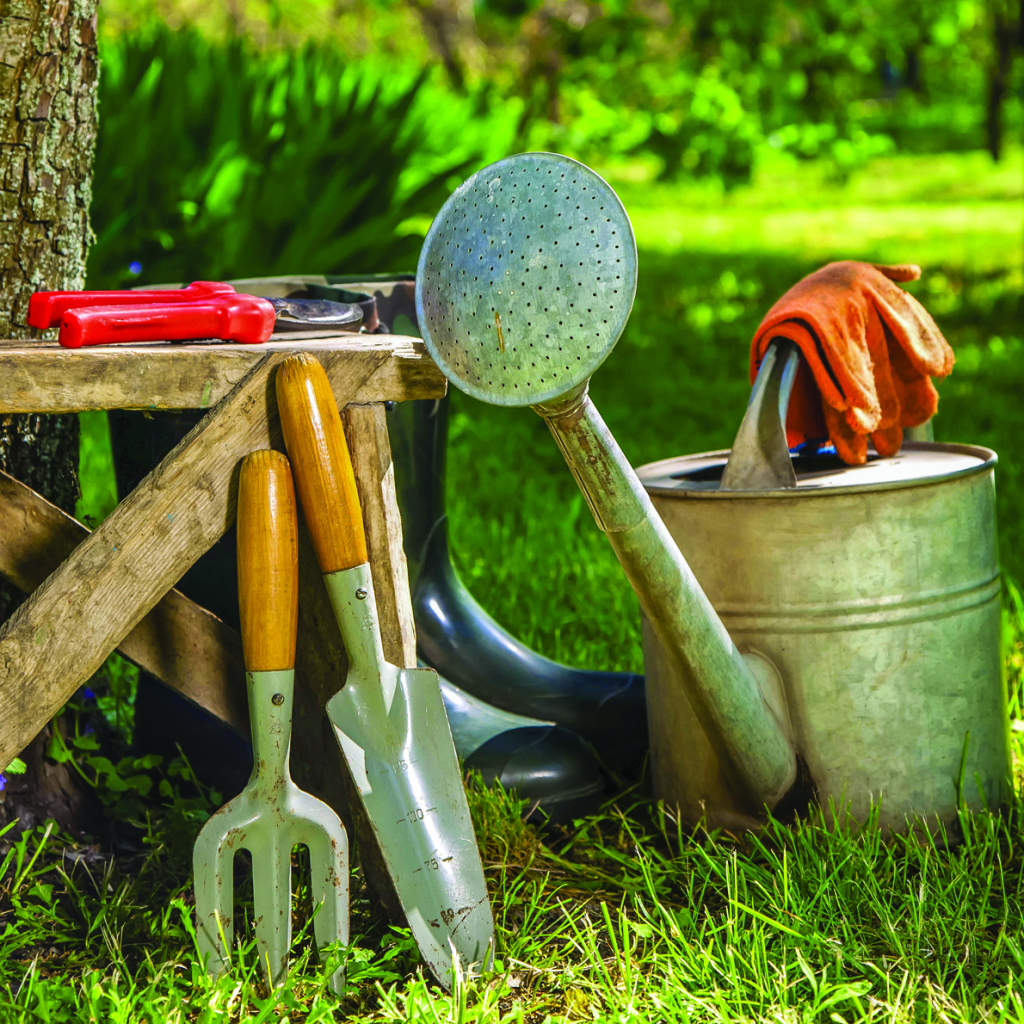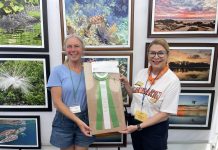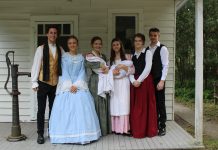By Master Gardener Volunteer Lesley Arrandale
mail@floridanewsline.com
I recently watched a webinar hosted by the Florida Wildflower Foundation discussing what it takes to define a plant as “native” and why it matters (https://tinyurl.com/3zt7ah85). It’s a complicated topic. I was surprised to learn that the lovely blanket flower (Gaillardia pulchella) isn’t native to Florida, but is a more western wildflower.
What is probably more relevant to a backyard gardener is the concept of ‘Florida-Friendly.’ There are nine ‘principles’ (see https://tinyurl.com/46bvmtas), but basically it is a way to treat the land we tend, however small, in ways to conserve and protect water sources and wildlife, like the bees and butterflies that grace our gardens. This University of Florida scheme (https://ffl.ifas.ufl.edu/), can help us to choose and grow a wide variety of plants, design a landscape in which they can flourish, and enjoy the wildlife that will naturally be attracted to our yards. Luckily that blanket flower fits the bill. While much of the farming world still relies largely on potentially harmful pesticides and herbicides, individuals can go a long way in mitigating those harms by following Florida-Friendly principles in their own backyards.
If you use a landscaping company, the section of the Florida-Friendly website on hiring a Florida-Friendly professional (https://ffl.ifas.ufl.edu/resources/hire-florida-friendly/), could help you assess whether a company or individual is sufficiently knowledgeable to take care of your landscape the Florida-Friendly way. If you want to tread lightly on your land, it’s important that all the people who work on it agree about what that really means.
As the clocks go forward, there are unmistakable signs of spring. Spiderwort (Tradescantia ohioensis) is one native wildflower coming into its own. The subtle purple-blue three-petaled flowers have a fluffy center topped with yellow anthers and are irresistible to cruising honeybees. Native Darrow’s blueberries (Vaccinium darrowii) bloom early and attract a variety of small pollinators, while larger bumblebees enjoy the flower spikes of African Blue basil. This is a cultivated variety which, like many salvias, is very attractive to pollinators. My native cross vine (Bignonia capreolata) is festooned around a large beautyberry shrub — it looks glorious, and bees love it. In a few weeks’ time when the flowers fade, I’ll trim back the cross vine and the beautyberry will begin flowering. The two began growing together more than 20 years ago, and I’ve loved the combination ever since.
Check out the gardening calendar for North Florida (https://tinyurl.com/4mzdkysv) for a reminder of things to do and plants you can add to your garden. We all find gaps in our beds and wonder what new ideas we can try, and it’s helpful to find advice from the experts. As well as timely tips, there are links to topics such as bulbs for the Florida garden.
Enjoy our delightful spring weather while it lasts. The hot and humid days of summer are on the horizon!






